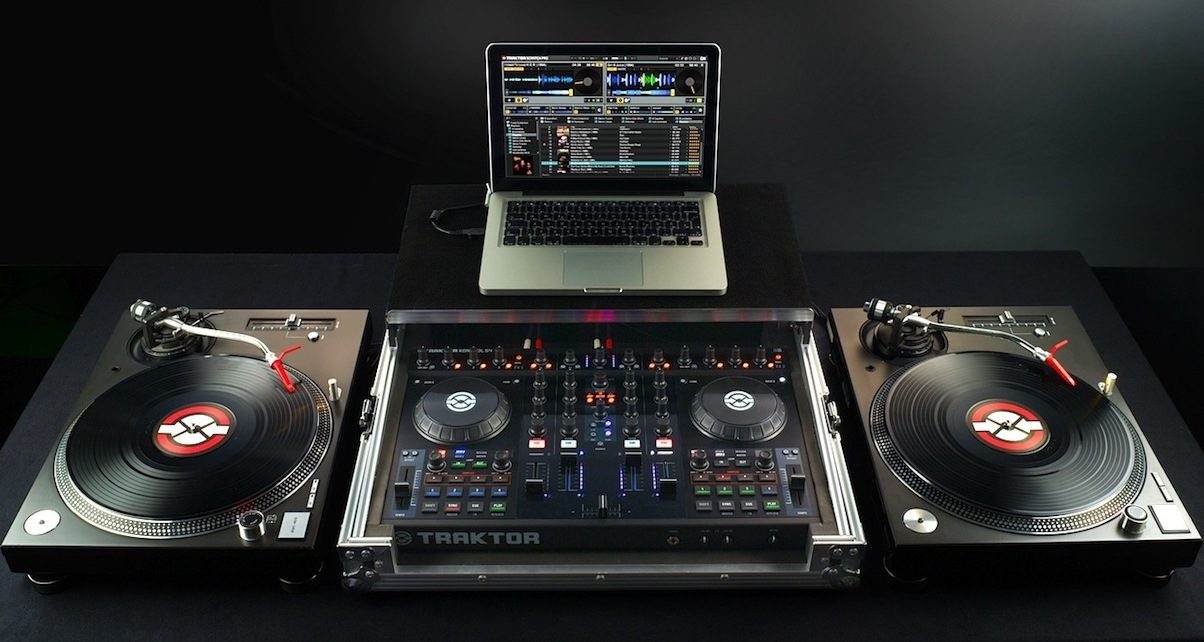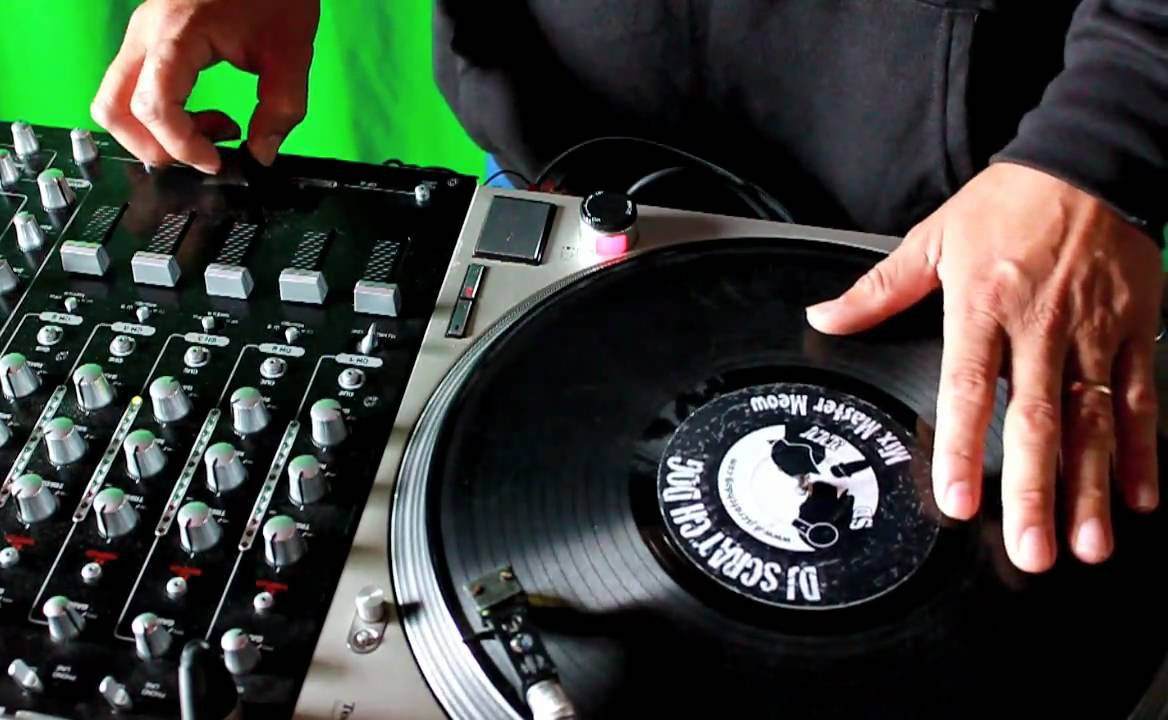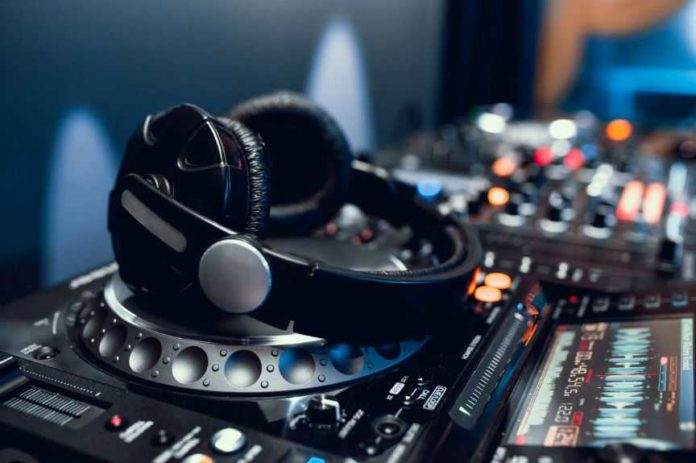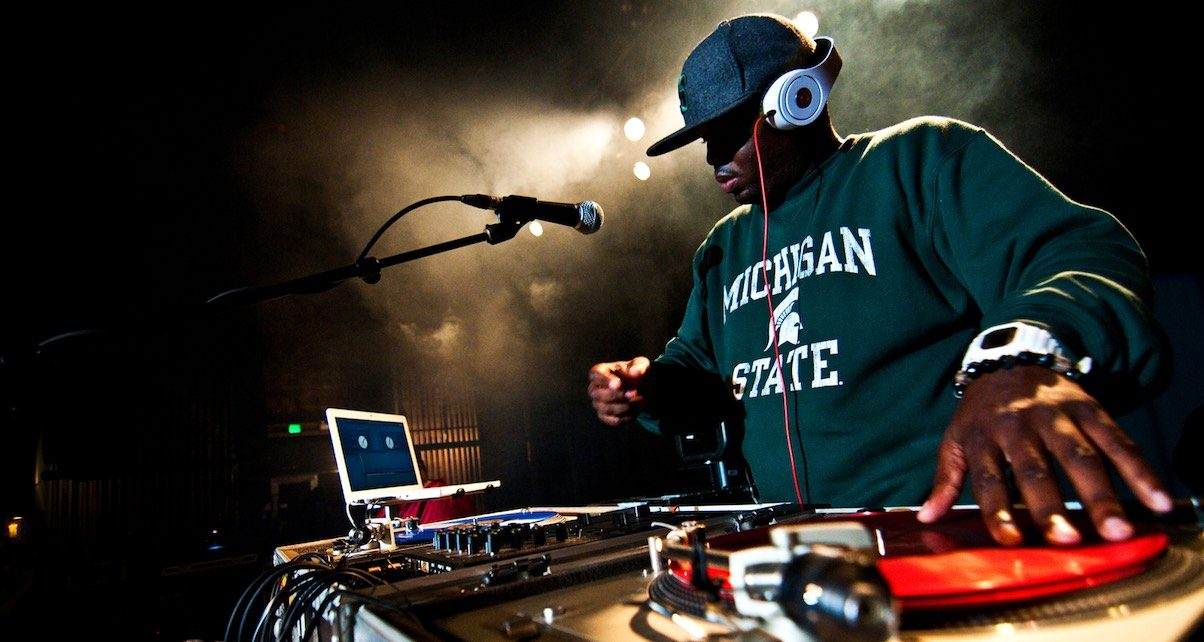Disclosure: This post contains affiliate links, which means we may earn a commission if you purchase through our links at no extra cost to you.
When you do what you love, and for a job, it doesn’t feel like a job, you don’t get tired, you just enjoy doing it because you don’t need external motivation and other things come as a bonus.
Like being a D.J., if you love being one, the feeling of mixing and changing the songs for the amusement of the crowd, is really a privilege in its own right.
Table of Contents
DJing Before Digital Vinyl System D.V.S.
In the early days of D.Jing, a D.J. required to play records or C.D.s on the turntables, these records or C.D.s have songs on them.
This meant moving with a number of records or C.D.s containing all the songs you plan to play at a gig; this brought about a number of challenges like:
1. Time-consuming
It took time for the D.J. to change between records or C.D.s, which has to be physically fitted on the turntables to play the content on them.
2. Physical distribution
Getting some records in some parts of the world was a challenge, meaning other parts of the world can’t play those songs on such records or C.D.s.
3. Conditions of the Record
When records got out of conditions, they can’t play anymore, that meant no more playing those songs on that record or C.D., you will have to source the exact replacement.
4. Mobility
During those days, if you had to play at two or more different gigs in a day, you will have to move about with a bag or box of records or C.D.s.
5. Deadly skips
If in the middle of a gig, you mistakenly move the needle, the song would skip to the part that the needle goes to, this will result in an unpleasant skip in the playing song.
These were some of the disadvantages then,
Digital Vinyl System
Technology has really come to make life easier for us, to give solutions to the challenges named above; in 2001, a DIGITAL VINYL SYSTEM was inverted.
If you are a tradition D.J. by this time, you needed to start learning to play with the new system, and for you to understand, you will at least need to know the basics of the system itself.
What is a Digital Vinyl System
This is a software that allows you to control the music on your computer with turntables as an interface.
We use Digital Vinyl System because it eliminates the challenges discussed here:
- It saves you time, as you do not need to change records or C.D.s. you will only need to use one timecode to play all the songs
- You will not need to move with a bag or box of records or C.D.s as you will just need the songs on your computer.
- Replacement is made easier, as you will not be required to look for a specific record or C.D. with exact songs on them, but as long as your timecode is replaced, you can play a song on your computer.
- In case you mistakenly move the needle on they timecodes, the sound won’t change because the timecode has a continuous analog signal on it, hence no deadly skips
Components of the System
You will need the following basic components to set up your system:
1. Computer
This is where you will store your music library; you can download and organize your library according to your specifications. You should manage and know it very well and prepare it always as you prepare for a gig according to the songs you plan to play during your gig.
2. Software
This will have to be installed on your computer; it will enable your computer to recognize and interpret the signal being received.
- Track position, regardless of where you drop the needle; on the timecode, the song will play from the same marked point.
- Track direction, it will keep track direction, so if you move the timecode back and forth, the song will also go back and forth.
- Playback speed, if you adjust the playback speed on the turntables, the song playing will also play according to your adjustments
There are a number of such software out there, but the most famous are Traktor scratch pro 2, Serato D.J., Virtual D.J., and Rekordbox D.V.S.
Whenever you are picking a software; it’s very important to mind your equipment make sure you pick the software that is compatible with your equipment like a sound card, mixer e.t.c
3. The digital vinyl system enabled mixer
This will be responsible for converting the analog signal from the timecode playing on the turntables and send it as a digital signal to the computer. Make sure the connections are rightly made because you would want the mixer to pick the correct signals as well as send them to the computer after converting.
4. Timecode
This looks just like any other record vinyl, but instead of having songs on it, it has an analog signal imprinted on it, this is the signal sent to the mixer when it’s playing for converting.
You can imagine such a record vinyl would be used more frequently, it is robust, but it wears out. Hence you have to take care of it.
- Always keep it in the right anti-scratching sleeve.
- Clean it from time to time appropriately.
- Only hand it by the edge or by the label, not on the grooves.
- Do not remove whilst it’s playing, as you might scratch it.
- Avoid piling the record vinyl on top of each other.
5. Turntables
This will be your interface to control the songs, and this is where the timecode is played from. Make sure the turntables are properly set to withstand vibrations or moving while you are playing. Always keep the needle clean, remember the needle is picking the signal off the timecode so any dust particle or foreign material can distort the signal being picked.
Also, set the weight on the needle correctly.
6. Speakers
These will basically give out the product of all the things done in terms of digital audio playback.
How Does Digital Vinyl System Work
The concept of operation of a D.V.S. can be summarized in simple terms is as follows.
- The timecodes are loaded on the turntables when it’s played. The analog signal will be transmitted to the mixer.
- The mixer then converts the analog signal to a digital signal and sends it to the computer.
- The computer, with the help of the software installed on it, interprets this signal and detects the track position, direction, and playback speed.
- Then give the output as interpreted from the turntables, if you press play on the turntables the pre-loaded song on the computer plays, if you stop, scratch or spin the same happens to the song playing, thereby giving you the control over the playing song.
DJing On a Digital Vinyl System
Now that you have a picture of what a digital vinyl system is, how it’s set up, how it works, and the advantages of using it, perhaps it’s now time to prepare you for your first gig on the system.
The following steps will help you build on the knowledge you gathered about the system and get you ready to kick start your playing skills on the digital vinyl system (D.V.S.).
1. Organizing
After getting the system organized, you will need to organize your library on your computer, also known as the Crate.
Organizing your songs now would be easier because there is no need to be going after records or C.D.s like the old traditional way.
You can help us a D.J. pool to download your music, however, avoid downloading random songs, songs that you might never even play, which is just going to fill your library.
You will need to put quality control into play.
“Make sure you master your library so that you know exactly where to find the songs that you want to play.”
2. Practice Alone
“A class of pupils taught by the same teacher, with the same notes and taught the same topics, will still produce different results.”
After learning about everything, it all comes down to personal efforts, that’s what differentiates how good we really become, how hard and well you practice will, in the end, determine how good you be.
3. Decks
Familiarize yourself with the number of different decks that are used, though most of them are almost the same, know your way around the functions on them. When scratching, make sure you do it from your nine o clock, this gives you more room to move the record back and forth without touching the needle
4. Beat Match
you should be familiar with the beats per minute (B.P.M.s), when you become an expert, you will learn to mix songs with different B.P.M.s But at this stage, you would do well to practice and start with songs that have the same B.P.M. Avoid sloppy beat match, especially if you are performing in big clubs. Remember songs are recorded with different levels of volume, and it’s up to you the D.J. to balance the beats,
5. Blend tracks with E.Q.s
Master how to blend the tracks with the equalizers appropriately, this will give you quality balanced output digital audio playback. Avoid the over-use of filters as this removes too much sound leaving the quiet at rooms.
6. Timing
Work on your timing as much as possible because, it is a very important asset, this will help you know the phrasing of the tracks, track structures, timing your mixes and mixing harmonically. Avoid unfinished mixes, when you mix don’t forget to turn down the other song playing on the other side
7. Practice in Public
Having practiced alone would give you the much needed time to learn and build your knowledge and confidence,
But, sometimes we learn by going out and getting it wrong; this shows our weaknesses and strengths.
Try getting yourself some bookings on small events, like House parties, birthday parties in the family or neighborhood, the fact that you are not experienced can be threatening, but playing in front of familiar faces like family members or friends can calm your nerves.
This also will invite suggestions and advice from those within the family or among friends on how you can improve your skills.
8. Building on the Experience
In my opinion, “the difference between a beginner and an expert is experience” whenever you start something, the only way you are going to become an expert is through acquiring expert.
It’s the same you have done the necessary researches, and you have learned the background of the system, what digital vinyl system does, the advantages, and you have practical experience of it.
Now the only missing thing is experience, gather experience as much as possible, and you will be on an expert in the field, try to offer services in a bid to have as many gigs as possible that’s the only way of acquiring the much-needed experience.
Get together with D.J.s, who have more experience from them; it’s always good to learn from those with experience of the same field.
When the D.J.s that have more experience than you have gigs, offer a hand, and go with them to those gigs, by being there, you might learn a thing or two, and that will contribute to your experience.
Conclusion
All in all, this road from beginner to expert will be one with challenges, ups, and downs, you will need to be persistent, determined, and focused.
Be reminded that many others out there are pursuing the same dream as you, so you will have to bring something unique to the fold for you to stand out.
The journey might be long but remember to keep the eyes on the prize and surely it shall be awarded to you.



